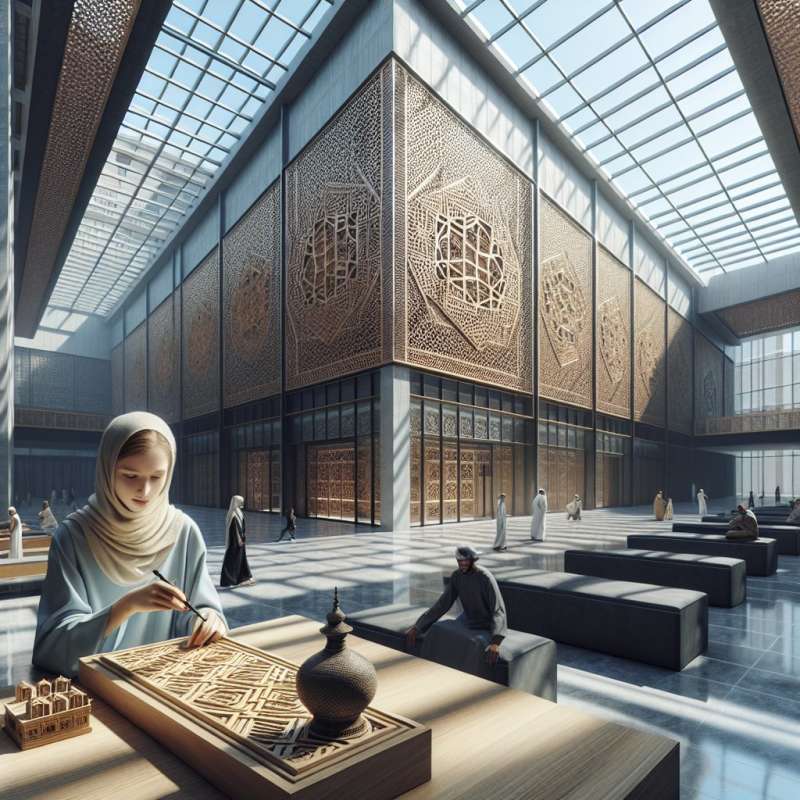
Origins of Mashrabiya
Mashrabiya, an architectural element, arose in Middle Ages Islamic societies. It's a type of oriel window, intricately crafted from wood or stone, serving both privacy and climatic control purposes in homes.
Mashrabiya: Functional Elegance
Designed to reduce sunlight and allow ventilation, mashrabiyas feature latticework that also enabled residents to observe the street unseen, preserving privacy within domestic spaces in densely populated areas.
Craftsmanship and Materials
Mashrabiyas were traditionally handcrafted by skilled artisans using 'turnery.' This technique involves turning small wooden pieces to create the latticed screens without using nails.
Cultural and Social Role
Beyond their environmental function, mashrabiyas had a social role, symbolizing status. The complexity and design intricacy often reflected the homeowner's wealth and social standing in the community.
Mashrabiya in Literature
Mashrabiyas have been immortalized in Arabic literature and poetry, praised for their beauty and the sense of mystery they impart, often serving as a metaphor for hidden desires.
Threats to Mashrabiya Traditions
Modernization and industrialization have threatened traditional mashrabiya craftsmanship, with authentic designs being replaced by less intricate, mass-produced alternatives or abandoned for modern architecture.
Preservation and Revival
There's a growing movement to preserve mashrabiya techniques, recognizing them as a vital part of cultural heritage. Contemporary architects are also reinterpreting mashrabiyas in modern buildings using new materials like metal and glass.
What era did mashrabiya originate?
Modern Islamic era
Ancient Egyptian times
Middle Ages Islamic societies
Company